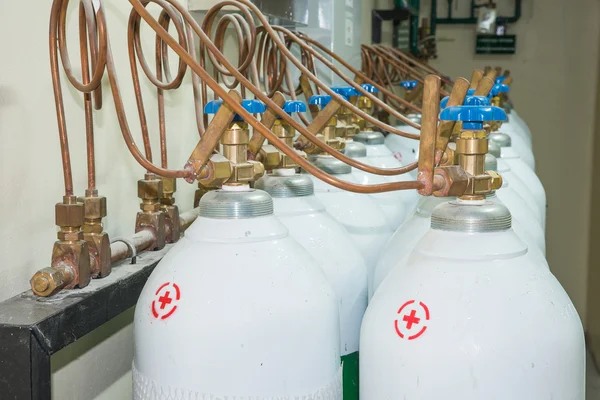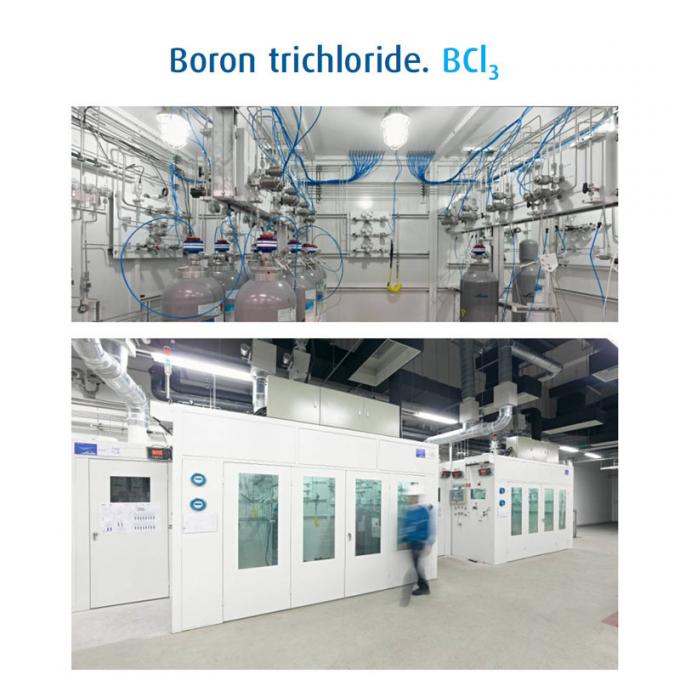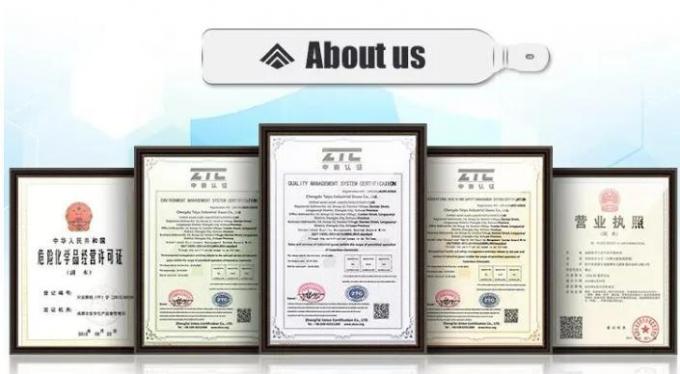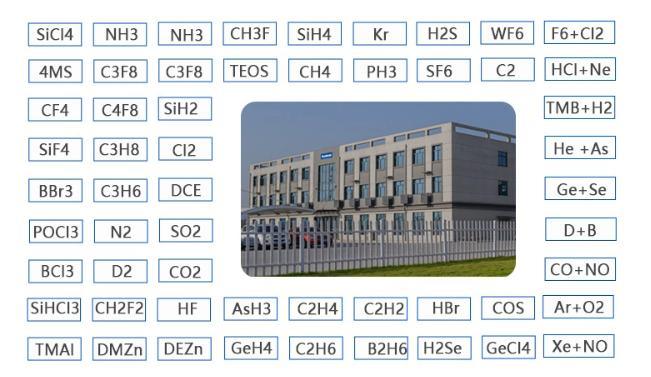


| MOQ: | 1kg |
| Price: | US $18 |
| Standard Packaging: | Cylinder |
| Delivery Period: | 15 days |
| Payment Method: | L/C, T/T |
| Supply Capacity: | 300,000tons/year |
Boron trichloride, often abbreviated as BCl3, is a chemical compound composed of boron and chlorine. It is a colorless, toxic gas with a pungent odor. Here are some key characteristics of BCl3:
Molecular Structure: BCl3 has a trigonal planar molecular geometry, with the boron atom at the center and the three chlorine atoms evenly distributed around it.
Physical Properties: As a gas, BCl3 has a boiling point of -107.5°C (-161.5°F) and a melting point of -107.8°C (-162.0°F). It is highly soluble in organic solvents but only slightly soluble in water.
Chemical Reactivity: Boron trichloride is a Lewis acid, meaning it is an electron pair acceptor. It readily reacts with Lewis bases to form adducts. For example, it reacts with ammonia (NH3) to form boron trihalide-ammonia complexes.
Industrial Uses: BCl3 has several applications in industry, including as a catalyst in chemical reactions, a reagent in organic synthesis, and as a dopant in the semiconductor industry for the production of boron-doped silicon.
Safety Considerations: Boron trichloride is highly toxic and corrosive. It can cause severe burns upon contact with the skin and eyes. Inhalation of the gas can result in respiratory irritation and damage. Proper precautions, such as working in a well-ventilated area and using appropriate protective equipment, are necessary when handling BCl3.
![]()


Specification:
Dot Class: 2.3
State: Liquid
Purity: 99.9%
UN NO:UN1741
CAS NO: 10294-34-5
Grade Standard: Industrial Grade
| Specification | 99.9% |
| Chlorine | ≤ 10 ppm |
| Silicon Tetrachloride | ≤ 300 ppm |
| Cylinder Specifications | Contents | |
| Cylinder Capacity | Valve | Weight |
| 47L | CGA 660 | 50 kgs |



| MOQ: | 1kg |
| Price: | US $18 |
| Standard Packaging: | Cylinder |
| Delivery Period: | 15 days |
| Payment Method: | L/C, T/T |
| Supply Capacity: | 300,000tons/year |
Boron trichloride, often abbreviated as BCl3, is a chemical compound composed of boron and chlorine. It is a colorless, toxic gas with a pungent odor. Here are some key characteristics of BCl3:
Molecular Structure: BCl3 has a trigonal planar molecular geometry, with the boron atom at the center and the three chlorine atoms evenly distributed around it.
Physical Properties: As a gas, BCl3 has a boiling point of -107.5°C (-161.5°F) and a melting point of -107.8°C (-162.0°F). It is highly soluble in organic solvents but only slightly soluble in water.
Chemical Reactivity: Boron trichloride is a Lewis acid, meaning it is an electron pair acceptor. It readily reacts with Lewis bases to form adducts. For example, it reacts with ammonia (NH3) to form boron trihalide-ammonia complexes.
Industrial Uses: BCl3 has several applications in industry, including as a catalyst in chemical reactions, a reagent in organic synthesis, and as a dopant in the semiconductor industry for the production of boron-doped silicon.
Safety Considerations: Boron trichloride is highly toxic and corrosive. It can cause severe burns upon contact with the skin and eyes. Inhalation of the gas can result in respiratory irritation and damage. Proper precautions, such as working in a well-ventilated area and using appropriate protective equipment, are necessary when handling BCl3.
![]()


Specification:
Dot Class: 2.3
State: Liquid
Purity: 99.9%
UN NO:UN1741
CAS NO: 10294-34-5
Grade Standard: Industrial Grade
| Specification | 99.9% |
| Chlorine | ≤ 10 ppm |
| Silicon Tetrachloride | ≤ 300 ppm |
| Cylinder Specifications | Contents | |
| Cylinder Capacity | Valve | Weight |
| 47L | CGA 660 | 50 kgs |

